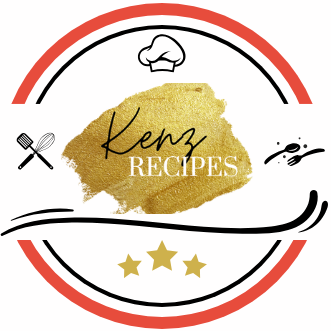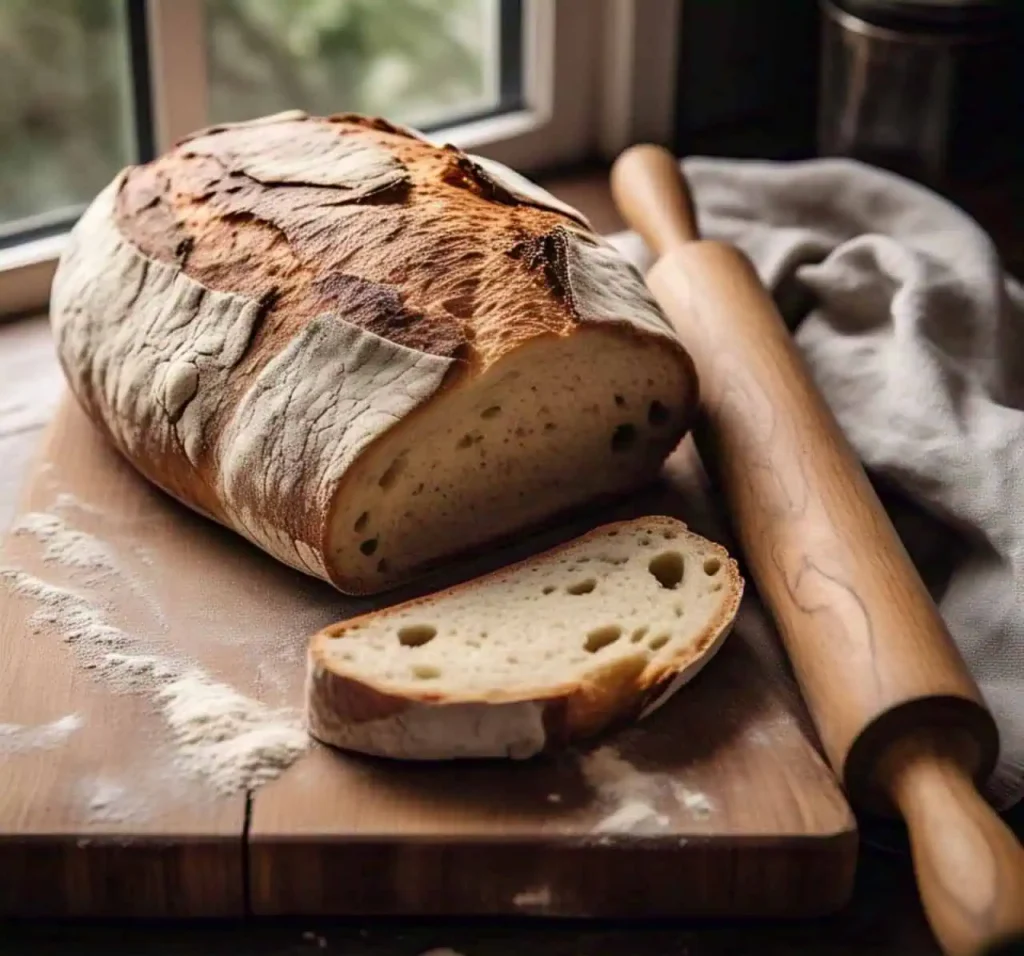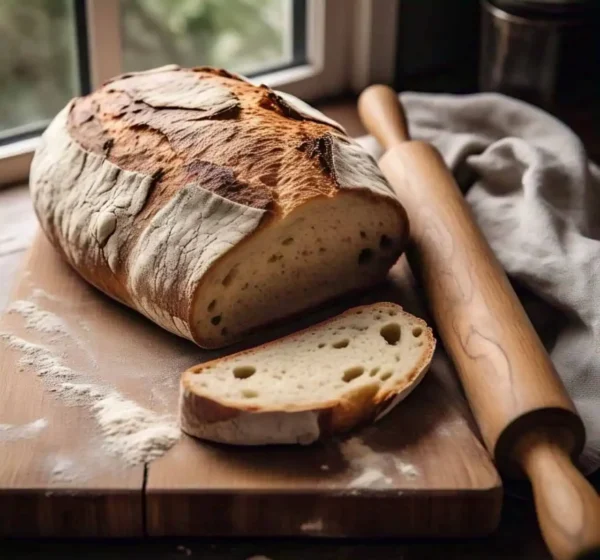Introduction
Bread is one of the most ancient and essential foods in human history. Found in nearly every culture, it serves as a staple food for billions of people worldwide. From the rustic loaves of Europe to the fluffy flatbreads of the Middle East, bread has evolved over thousands of years, adapting to different climates, ingredients, and traditions.
In this guide, we’ll explore the history, science, types, and nutritional benefits of bread, along with tips on baking, storing, and preserving it.
Table of Contents
The Importance of Bread in Global Cuisine
Bread plays a central role in nearly every cuisine. It can be:
A basic food staple – providing essential carbohydrates and energy.
A cultural symbol – deeply tied to religious and social traditions.
A versatile ingredient – used in everything from sandwiches to soups.
For centuries, bread has been a symbol of life, sustenance, and hospitality. In many cultures, breaking bread together represents unity and friendship. Whether it’s a French baguette, an Indian naan, or an American sandwich loaf, bread continues to bring people together.
A Brief History of Bread – From Ancient Times to Today
Bread-making dates back over 10,000 years, with early civilizations discovering that mixing ground grains with water and baking it over a fire created a nutritious and filling food.
Ancient Bread Origins
- Egyptians (3000 BCE): One of the first cultures to use yeast to ferment dough, leading to the first leavened bread.
- Romans (100 BCE): Improved milling techniques and introduced public bakeries.
- Middle Ages (500-1500 CE): Bread became a dietary staple across Europe, with different regions developing unique varieties.
Modern Bread Evolution
- Industrial Revolution (1800s): Mechanized milling produced finer, whiter flour, making white bread a status symbol.
- 20th Century: Mass production led to the rise of pre-sliced and packaged bread.
- 21st Century: A renewed interest in artisan, sourdough, and whole grain breads has revived traditional baking methods.
Today, bread is more diverse than ever, offering a wide range of flavors, textures, and health benefits.
Different Types of Bread Around the World
Bread comes in countless varieties, each with its own unique ingredients, textures, and baking techniques. From soft and fluffy to dense and chewy, here are some of the most popular types of bread enjoyed across different cultures.

1. Sourdough – The Classic Fermented Bread
Sourdough is one of the oldest and most natural types of bread, made using wild yeast and bacteria instead of commercial yeast. This slow fermentation process gives sourdough its distinct tangy flavor, chewy texture, and crisp crust.
Origin: Ancient Egypt, but now popular worldwide.
Key Ingredients: Flour, water, salt, and a sourdough starter (fermented flour and water mixture).
Why It’s Loved: Naturally leavened, easier to digest, and contains gut-friendly probiotics.
2. Baguette – France’s Iconic Loaf
The French baguette is a long, thin loaf known for its crispy crust and soft, airy interior. It is a staple in French cuisine and often enjoyed with butter, cheese, or dipped in coffee.
Origin: France (1800s).
Key Ingredients: Flour, water, yeast, and salt.
Why It’s Loved: Perfect for sandwiches, soups, or simply with butter.
3. Ciabatta – Italy’s Rustic Favorite
Ciabatta is a light, airy, and slightly chewy Italian bread with a crisp crust and open crumb structure. It is widely used for making panini sandwiches.
Origin: Italy (1982, created as a response to the popularity of the French baguette).
Key Ingredients: Flour, water, olive oil, yeast, and salt.
Why It’s Loved: Its soft texture absorbs flavors beautifully, making it ideal for sandwiches.
4. Naan and Roti – The Pillars of Indian Cuisine
Naan and roti are two of the most common flatbreads in South Asian cuisine.
- Naan is a soft, leavened flatbread traditionally cooked in a tandoor (clay oven) and often brushed with butter or garlic.
- Roti (or chapati) is an unleavened whole wheat flatbread, typically cooked on a stovetop griddle (tava).

Origin: India, Pakistan, and surrounding regions.
Key Ingredients: Naan – Flour, yogurt, yeast; Roti – Whole wheat flour and water.
Why They’re Loved: Versatile, used to scoop up curries, stews, and grilled meats.
5. Pita – The Versatile Mediterranean Flatbread
Pita is a soft, round, pocket-style bread commonly found in Mediterranean and Middle Eastern cuisine. When baked at high temperatures, the dough puffs up, creating a hollow pocket perfect for stuffing.
Origin: Middle East and Mediterranean regions.
Key Ingredients: Flour, water, yeast, salt, and olive oil.
Why It’s Loved: Great for wraps, gyros, falafel sandwiches, or as a dipper for hummus.
6. Rye Bread – A Staple in Eastern Europe
Rye bread is made with rye flour, giving it a denser texture, earthy flavor, and dark color. It is often used for hearty sandwiches and pairs well with smoked meats and cheeses.
Origin: Scandinavia, Germany, and Eastern Europe.
Key Ingredients: Rye flour, water, yeast, and caraway seeds (optional).
Why It’s Loved: Rich in fiber and has a long shelf life.
7. Cornbread – A Southern American Favorite
Cornbread is a quick bread made primarily from cornmeal, giving it a slightly sweet, crumbly texture. It is often served as a side dish with barbecue, chili, or fried chicken.
Origin: Native American and Southern U.S. cuisine.
Key Ingredients: Cornmeal, flour, baking powder, milk, butter, and eggs.
Why It’s Loved: Quick to make, naturally gluten-free, and deliciously moist.
8. Other Notable Breads from Around the World
Focaccia (Italy): A flat, olive oil-rich bread topped with herbs.
Pretzel (Germany): A twisted, chewy bread with a salty crust.
Lavash (Armenia): A thin, soft flatbread often used for wraps.
Challah (Jewish cuisine): A sweet, braided bread traditionally eaten on holidays.
Injera (Ethiopia): A spongy, sourdough flatbread made from teff flour.
No matter where you go, bread is a universal comfort food with countless variations. Each culture adds its own twist, making it an essential part of daily life.
The Science Behind Bread-Making
Bread-making is both an art and a science. Understanding how different ingredients interact helps you create light, airy loaves or dense, hearty breads depending on your preference. Here’s a breakdown of the key scientific processes behind baking bread.
1. The Role of Yeast in Fermentation
Yeast is a living microorganism that plays a crucial role in making bread rise. When yeast is combined with flour and water, it begins to ferment, producing:
- Carbon dioxide (CO₂): Creates air bubbles, making the dough rise.
- Ethanol (alcohol): Adds flavor and aroma to the bread.
Types of Yeast Used in Bread-Making:
🔹 Active Dry Yeast – Granulated, needs to be dissolved in warm water before use.
🔹 Instant Yeast – Finer texture, can be added directly to dry ingredients.
🔹 Fresh Yeast – Moist, perishable, and used by professional bakers.
🔹 Wild Yeast (Sourdough Starter) – Naturally occurring yeast and bacteria that ferment over time.
Pro Tip: Yeast is most active between 75-95°F (24-35°C). Too much heat (above 140°F / 60°C) will kill it, stopping fermentation.
How Gluten Affects Bread Texture
Gluten is the protein in wheat flour that gives bread its structure and chewiness. When flour is mixed with water, gluten proteins form an elastic network that traps air, allowing the dough to expand.
How Gluten Affects Different Breads:
- High-Gluten Breads (Chewy & Airy) – Baguette, sourdough, ciabatta.
- Low-Gluten Breads (Soft & Tender) – Brioche, sandwich bread.
- Gluten-Free Breads (Dense & Moist) – Made with almond flour, rice flour, or tapioca starch.
The Importance of Kneading and Proofing
- Kneading: Develops gluten, making the dough stretchy and strong.
- Proofing (Rising): Allows yeast to ferment, giving the bread its rise and flavor.
Steps in the Proofing Process:
1️⃣ Bulk Fermentation (First Rise): The dough doubles in size as yeast produces gas.
2️⃣ Shaping: Dough is formed into loaves or rolls.
3️⃣ Final Proofing (Second Rise): Dough rises again before baking for a lighter texture.
Pro Tip: Over-proofed dough collapses when baked, while under-proofed dough results in a dense loaf. The perfect proof is when the dough springs back slightly when gently pressed.
Baking: The Magic Transformation
When bread is placed in the oven, the heat causes:
- Oven Spring: Rapid expansion of gases inside the dough, leading to a final rise.
- Maillard Reaction: A chemical reaction between proteins and sugars that creates the golden-brown crust.
- Caramelization: Natural sugars in the dough break down, adding sweetness and color.
Pro Tip: To achieve a crispy crust, bake with steam in the first 10 minutes by placing a pan of hot water in the oven or misting the dough with water before baking.
How to Make Bread at Home
Baking bread at home is a rewarding experience that allows you to control the ingredients and customize flavors. Whether you’re making a simple loaf or experimenting with artisan bread, following the right techniques ensures a soft, airy crumb and a crisp, golden crust.
Essential Ingredients for Homemade Bread
While bread recipes can vary, most require these four basic ingredients:
- Flour – Provides structure (bread flour, all-purpose flour, or whole wheat).
- Water – Activates gluten and yeast.
- Yeast – Helps the dough rise by fermenting sugars.
- Salt – Enhances flavor and controls yeast activity.
Optional Additions:
- Butter or oil – Adds richness and softness.
- Sugar or honey – Feeds yeast and adds a slight sweetness.
- Milk – Creates a softer texture (used in sandwich bread and brioche).
Step-by-Step Guide to Baking a Simple Loaf
Follow this beginner-friendly bread recipe to make a classic white or whole wheat loaf.
Ingredients:
- 3 ½ cups bread flour (or all-purpose flour)
- 1 packet instant yeast (or 2 ¼ tsp active dry yeast)
- 1 ¼ cups warm water (about 110°F / 43°C)
- 1 ½ tsp salt
- 1 tbsp olive oil or butter
Step 1: Activate the Yeast
1️⃣ In a small bowl, mix warm water and yeast. Let sit for 5–10 minutes until it becomes foamy (if using active dry yeast).
Step 2: Mix the Dough
2️⃣ In a large bowl, combine flour and salt.
3️⃣ Add the yeast mixture and olive oil. Stir with a wooden spoon until a rough dough forms.
Step 3: Knead the Dough
4️⃣ Transfer the dough to a floured surface and knead for 8–10 minutes until smooth and elastic.

Step 4: First Rise (Bulk Fermentation)
5️⃣ Place the dough in a greased bowl, cover with a damp towel, and let rise for 1–2 hours until doubled in size.
Step 5: Shape and Second Rise
6️⃣ Punch down the dough, shape it into a loaf, and place it in a greased loaf pan.
7️⃣ Cover and let rise for 30–45 minutes until slightly puffy.
Step 6: Bake the Bread
8️⃣ Preheat the oven to 375°F (190°C).
9️⃣ Bake for 25–30 minutes until golden brown and sounds hollow when tapped.
🔟 Let cool before slicing.
Pro Tip: Brush the top with butter after baking for a softer crust.
Common Bread-Baking Mistakes and How to Fix Them
- Dense Bread? – Use fresh yeast, knead longer, and allow enough rising time.
- Cracked Crust? – Avoid rapid temperature changes and cover with a towel while cooling.
- Dough Not Rising? – Check if yeast is expired or water is too hot/cold.

Health Benefits and Nutritional Value of Bread
Bread is a rich source of carbohydrates, fiber, and essential nutrients, making it a dietary staple for many cultures.
Whole Wheat vs. White Bread – Which is Healthier?
The type of flour used in bread affects its nutritional value, fiber content, and impact on blood sugar.
| Bread Type | Nutritional Benefits |
|---|---|
| Whole Wheat Bread | High in fiber (aids digestion) Rich in vitamins B, E, and magnesium Slower digestion, leading to longer-lasting energy |
| White Bread | Softer texture and milder flavor Fortified with some vitamins ❌ Lower in fiber, can cause quick blood sugar spikes |
to know more Link to authoritative sites ( a study on bread nutrition).
Is Gluten-Free Bread a Good Alternative?
For people with celiac disease or gluten sensitivity, gluten-free bread is a necessary option. However, it often contains more starches, gums, and additives to mimic the texture of wheat bread.
Pros: Safe for gluten-sensitive individuals, made from rice, almond, or coconut flour.
Cons: Lower in fiber, can be high in sugar or preservatives.
Tip: Look for gluten-free bread made with whole grains like quinoa, amaranth, or buckwheat for better nutrition.
How to Choose the Best Bread for Your Diet
- For Weight Loss: Opt for whole grain, sprouted grain, or sourdough for slower digestion
- For High Protein Diets: Look for bread with added seeds, nuts, or legumes.
- For Digestive Health: Choose high-fiber options like rye or whole wheat.
- For Low-Carb Diets: Try almond flour or flaxseed bread instead of traditional wheat.
By selecting the right type of bread, you can enjoy this staple food while maintaining a healthy and balanced diet.
Frequently Asked Questions (FAQs) About Bread
Why Does My Bread Turn Out Dense or Hard?
Dense bread is usually caused by:
- Under-kneading – The dough lacks proper gluten development.
- Not enough proofing time – Yeast didn’t have time to create enough air pockets.
- Too much flour – Makes the dough dry and heavy.

How Long Does Homemade Bread Last?
- Room temperature: 2–4 days (if stored properly).
- Refrigerator: Not recommended (causes bread to stale faster).
- Freezer: Up to 3 months (when wrapped tightly).
What’s the Best Flour for Bread Making?
It depends on the type of bread:
- Bread flour – High protein, best for chewy and structured loaves.
- All-purpose flour – Versatile, works for most bread types.
- Whole wheat flour – Healthier, but makes denser loaves.
- Gluten-free flour (almond, rice, oat) – Great for gluten-free bread, but requires binders like xanthan gum.
Can I Make Bread Without Yeast?
Yes! Try these alternatives:
- Baking soda or baking powder – Used in quick breads like banana bread.
- Sourdough starter – Naturally fermented for a yeast-free rise.
- Beer or yogurt – Can help with fermentation.
How Do I Get a Crispy Crust on My Bread?
- Bake with steam: Place a dish of hot water in the oven.
- Use high heat: Bake at 450°F (230°C) for the first 10 minutes.
- Brush with water or egg wash: Helps create a glossy, crunchy crust.
What’s the Difference Between Bread Flour and All-Purpose Flour?
- Bread flour has more gluten (12-14% protein), making it ideal for chewy, airy bread.
- All-purpose flour has less gluten (10-12%), making softer bread.
Tip: If using all-purpose flour instead of bread flour, add 1 teaspoon of vital wheat gluten per cup of flour for better elasticity.
Basic Homemade Bread
Equipment
- Mixing bowl
- Loaf pan (9×5-inch)
- Wooden spoon or stand mixer with dough hook
- Kitchen towel
- Oven
Ingredients
For the Bread Dough
- 3 cups all-purpose flour More as needed for kneading.
- 1 tbsp granulated sugar Feeds the yeast.
- 2¼ tsp instant yeast One standard packet.
- 1 tsp salt For flavor.
- 1 cup warm water Around 110°F (43°C).
- 2 tbsp olive oil or melted butter
Instructions
- In a large mixing bowl, combine warm water, sugar, and yeast. Let sit for 5 minutes until foamy.
- Add oil, salt, and 2 cups of flour. Stir to combine. Gradually add remaining flour until a soft dough forms.
- Knead the dough on a floured surface for 6–8 minutes, until smooth and elastic. Or use a stand mixer with a dough hook for 5 minutes.
- Place the dough in a lightly greased bowl, cover with a towel, and let rise in a warm place for 1 hour or until doubled in size.
- Punch down the dough and shape into a loaf. Place into a greased 9×5-inch loaf pan.
- Cover and let rise again for 30 minutes. Meanwhile, preheat oven to 375°F (190°C).
- Bake for 25–30 minutes until golden brown and the loaf sounds hollow when tapped.
- Let cool in the pan for 5 minutes, then transfer to a wire rack to cool completely before slicing.
Notes
Conclusion
Bread is more than just a staple food—it is a symbol of culture, tradition, and nourishment across the world. Whether you prefer the crusty crunch of a baguette, the chewy texture of sourdough, or the soft fluffiness of sandwich bread, there’s a type of bread for everyone.
By understanding the science behind bread-making, you can improve your baking skills and create homemade loaves with perfect texture and flavor. Choosing the right ingredients, storing bread properly, and reviving stale loaves can help you enjoy fresh, delicious bread every day while reducing waste.
So, why not try baking your own loaf of bread today?
For more Recipes to Try
Looking for citrus-inspired desserts? Check out these recipes:
- Citrus Mandarin Orange Cake Recipe: Discover vibrant orange dessert that pairs citrus flavors with a moist and tender cake base.
- Chocolate Orange Cake Recipe: Explore a richer take on orange desserts by combining chocolate and orange for a sophisticated treat.


